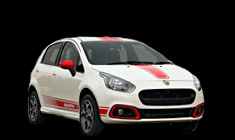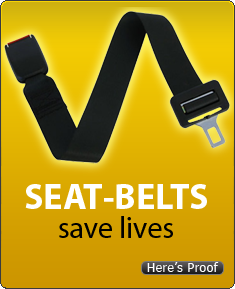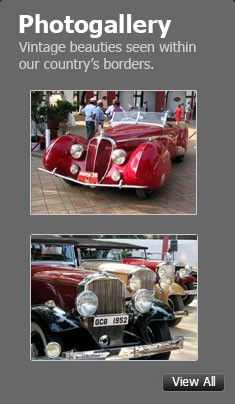News
Here's how I disabled the auto headlamp on feature on my RE Hunter 350
The DIY process is pretty simple and the method is almost universal and can be applied to most two-wheelers
BHPian maheshm619 recently shared this with other enthusiasts.
I purchased a RE Hunter 350 in September last year. Bit by bit, the bike was accessorized according to my liking. The bike is used primarily for office commutes and short rides and the ownership experience so far has been relaxed compared to my earlier vehicle, a decade-old CBR250. While CBR is a good vehicle, maintaining such a vehicle in a rural area has its challenges. The CBR ownership and challenges it threw, will need another thread and shall not drag it here.
In this post, I’ll focus on how the AHO (automatic headlight ON) was disabled on my bike using a simple mod. This mod is universal and can be applied to most vehicles. With the advent of BS4 vehicles, govt. had mandated DRL (daytime running lamp) for two-wheelers. Companies like TVS provided a dedicated LED DRL in most of their vehicles, whereas most manufacturers chose to keep the low beam always on and remove the headlight on/off button altogether. The contribution of such measures to improving road safety is debatable.

There are different methods available to disable the always-on headlight such as adding an extra switch to the low beam wire / changing the handlebar OEM switch assembly to one of an older model / get a plug-in module to the wiring harness. I didn’t want an extra switch poking out of the handlebar and the second option (OEM switch assembly) was also not possible as Hunter never had an older headlight on/off button. The aftermarket plug-in module also seemed expensive for the function it offered.

Being a DIY enthusiast, it was time to apply some of it to this problem (self-thought one). One solution was to form a two-relay-based setup which shall switch off the low as the vehicle is started. I had bought these relays and made a wiring diagram, but to mount the relays space was a constraint. It had to be placed under the seat and the wiring had to be routed under the fuel tank to the headlight area. I kept the plan on hold and was on the lookout for further options.
A wildcard entry to my plan was a photo-relay (Photosensitive relay). It was already used in our household to automate external lighting after dark. These relays however were rated for 230-volt AC and 12-volt DC options were exorbitantly priced.
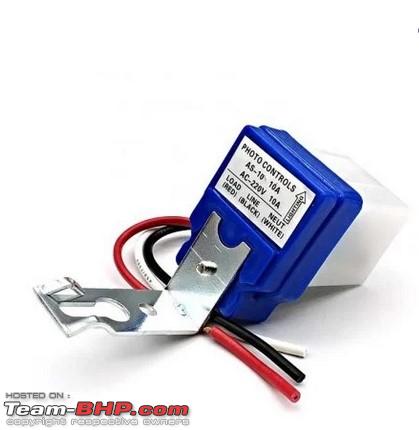
After a few hours of Google search, I ordered a 12-volt DC photo relay from a Pune-based components supplier online. It reached me in a week and work started.
Let the pictures do the talking.
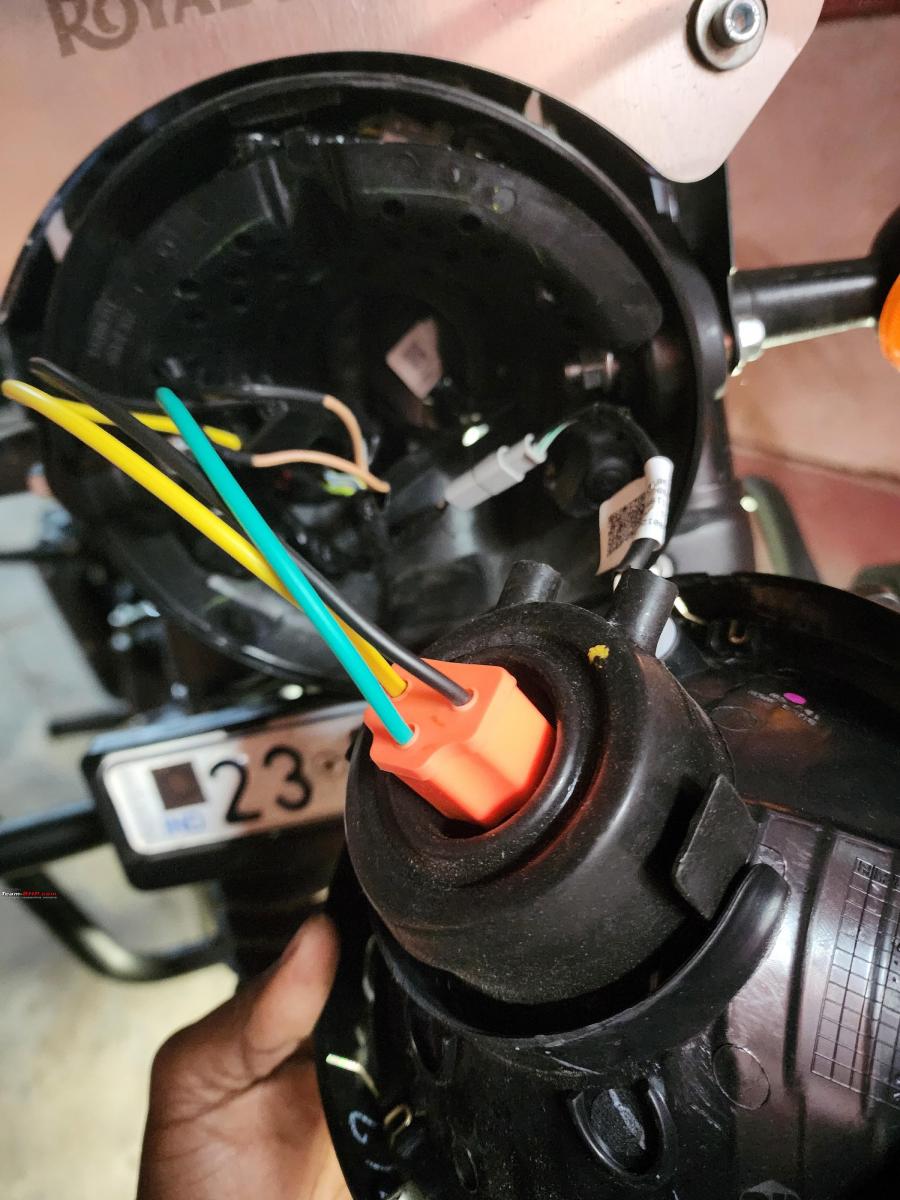
It had enough space to route wires and had to hold a headlight coupler (male to female). The H4 coupler makes the whole process free of any wire cutting / disturbing the factory wiring.


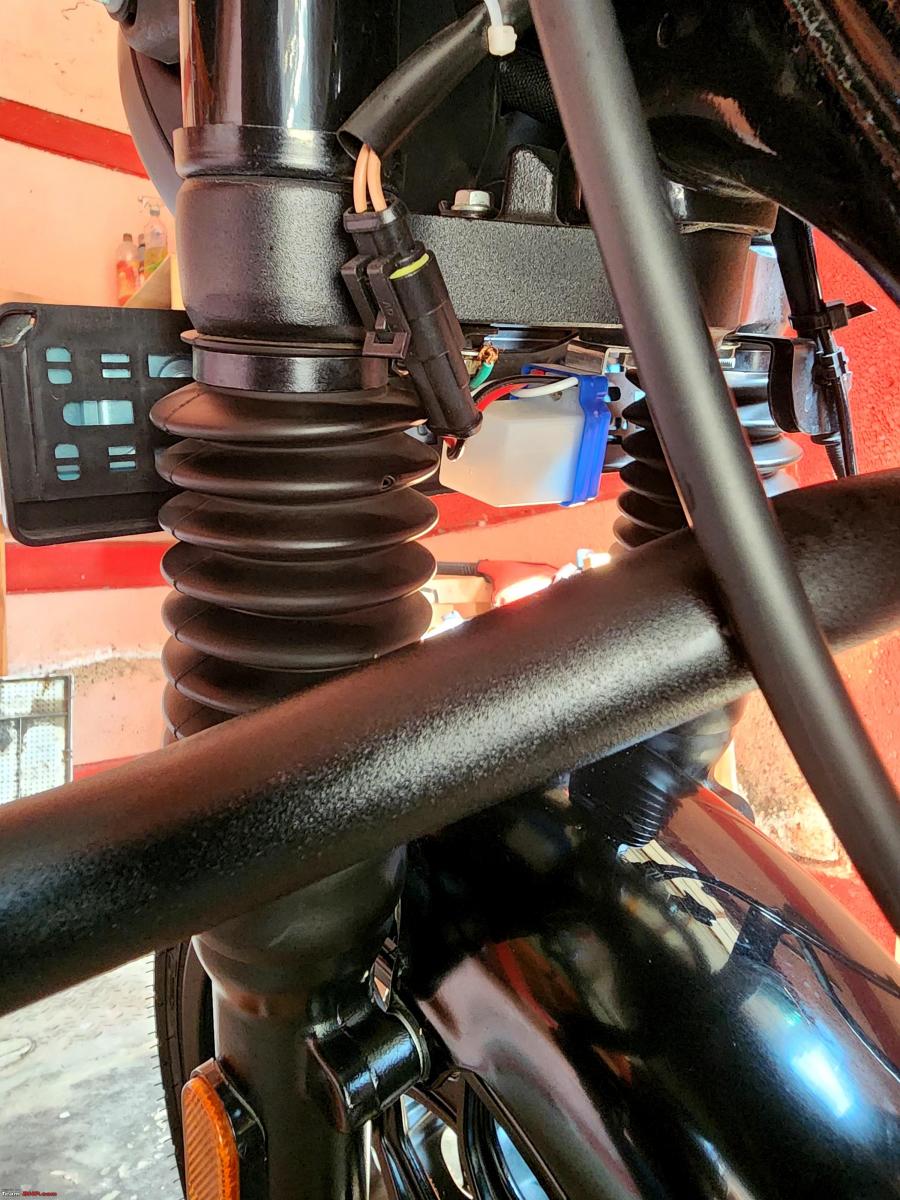
The whole setup is removable in 15 mins to stock form.
Outcome:
The relay gets power as the bike turns ON (engine starts) and the light (low beam) stays OFF during the day. As daylight intensity falls, the relay output switches and gives power to the Low beam wire and the headlight becomes ON. The daylight intensity switches the relay typically around evening around 6 pm in our area and is ideal. The placement of the relay behind the number plate ensures that the headlight doesn’t turn off at nighttime while a light beam of an opposite vehicle might fall on it.
Even during the day, one can turn on the headlamp by placing the switch on the HIGH beam as only low beam wiring was modified.
Pros:
- Low beam off during the day / reduced electrical load / DIY = satisfaction!
Cons:
- At a dimly lit area, when the low beam is kept ON by photo-relay, if the high beam is turned ON, it will cut supply to the relay (but the high beam will be working normally). When the beam is changed back from high to low, the relay needs 2-3 seconds to power ON and switch ON the low beam. This will cause a condition of no light for 2 seconds while changing from high to low. This condition is OK for me according to my bike usage pattern (minimal night usage / well-illuminated roads) but may not suit everyone else. One can however use the PASS switch normally without any such effect.
Verdict:
A simple but effective DIY for me. Personalizing one’s bike is a joy indeed. All the components required can be sourced online and can be completed in less than an hour. The bike has an additional pilot lamp ( T 10 , 5 Watt bulb) inside the headlamp housing which is always ON for people who are worried about no headlight during the day.
Check out BHPian comments for more insights and information.



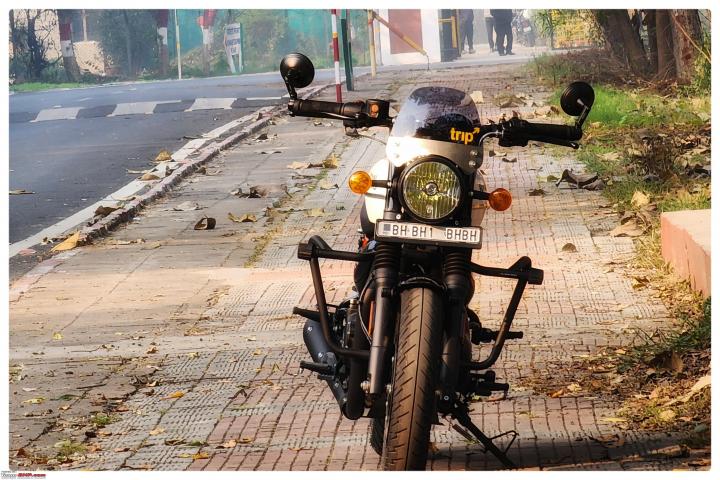






.jpg)




